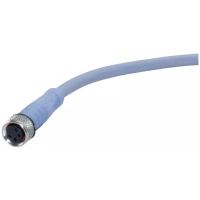WindO/I-NV4 User’s Manual 2-1
2
WindO/I-NV4 Features & Basic Operations
This chapter describes the minimum system requirements for WindO/I-NV4, how to start and exit it, and the
configuration of its screens and menus.
1.1 Available Data
● Data types
Data type is the format of the data related to the minimum and maximum values of data that can be processed by a
part and handling of negative and real numbers.
Data types and data ranges that can be used on the MICRO/I and WindO/I-NV4 are listed below.
●
Data handling
Data stored in device addresses is handled as described below.
Chapter 2
WindO/I-NV4 Features & Basic Operations
1 WindO/I-NV4 Specifications
Data type Required word count Processable data range
UBIN16(W) 1 0 to 65535
BIN16(I) 1 -32768 to 32767
UBIN32(D) 2 0 to 4294967295
BIN32(L) 2 -2147483648 to 2147483647
BCD4(B) 1 -999 to 9999
BCD8(EB) 2 -9999999 to 99999999
Float32(F) 2
-3.4x10
38
to -1.18x10
-38
,
0
, 1.18x10
-38
to 3.4x10
38
Bit - 0, 1
String(S) -
String data. It handles from the beginning to the NULL(00h) character as a
character string.
Data type Data handling
UBIN16(W) Data is handled as an unsigned 16-bit integer.
BIN16(I)
Data is handled as an signed 16-bit integer.
If the sign bit (bit 15) is 1, the value is two’s complement.
UBIN32(D)
Handled as an unsigned 32-bit integer with the starting address
number as the lower word.
BIN32(L)
Handled as a signed 32-bit integer with the starting address
number as the lower word.
If the sign bit (bit 31) is 1, the value is two’s complement.
BCD4(B)
Data is handled as a four digit (16-bit) binary-coded decimal value.
Each four bits from bit 0 to bit 11 is handled as the absolute value
for the 1st to 3rd digit.
Bit 12 to bit 15 is handled as the minus sign (-) when its value is F
(Hex) and it is handled as the absolute value for the 4th digit when
0 to 9 (Hex).
bit bit
15 0
1 word
Sign bit
bit
31
bit
0
Upper word Lower word
bit
0
bit
31
Lower wordUpper word
Sign bit
bit
bit
15 0
1 word
Sign
1st2nd3rd
Absolute value

